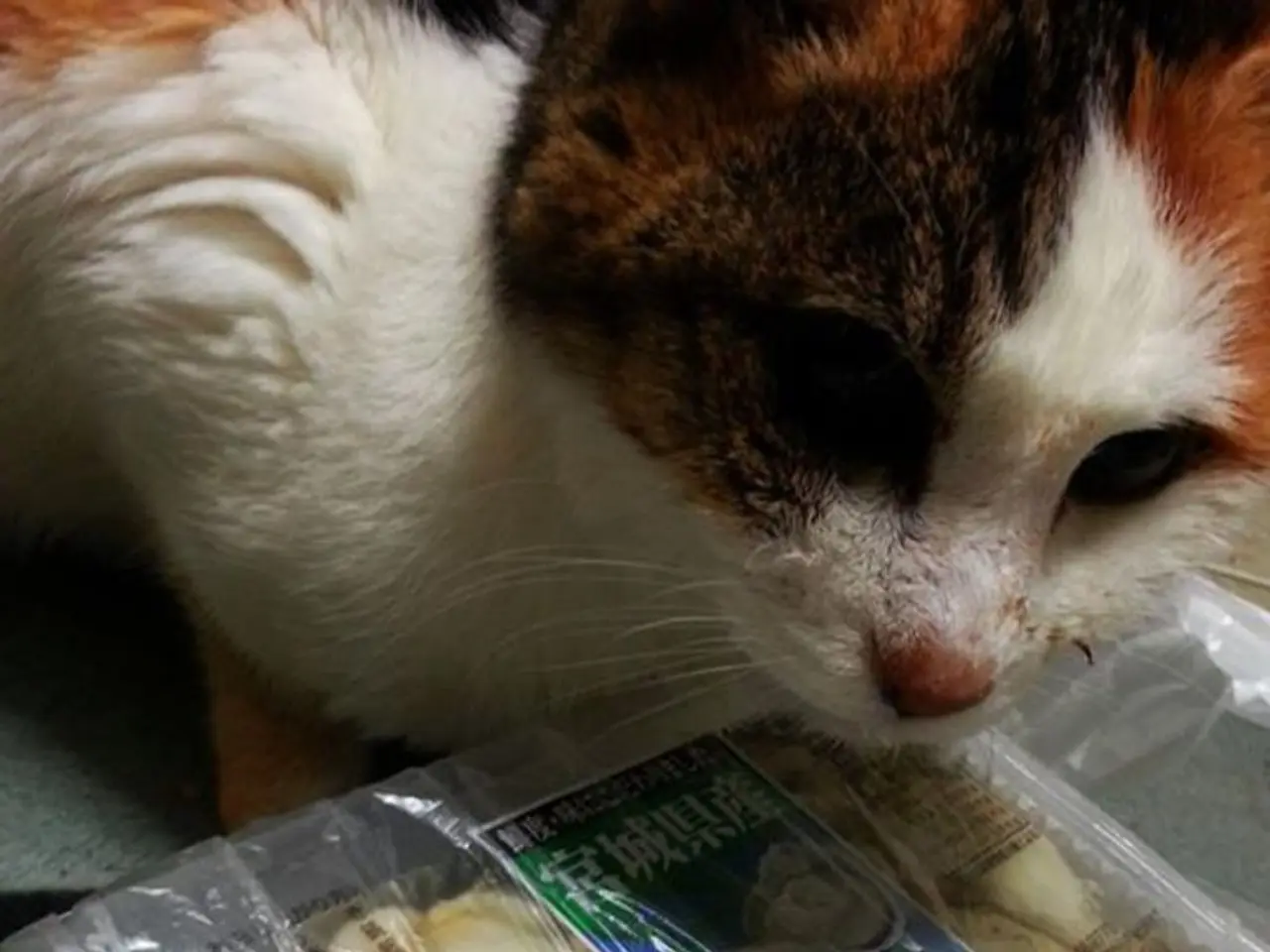Insatiable Feline Chomping Too Rapidly? Solutions for Cats Who Overeat Excessively, Too Quickly
Cats, much like their wild ancestors, are prone to eating their food quickly due to instinct, competition, or medical reasons such as diabetes or hyperthyroidism. Eating too fast can lead to vomiting and increase the risk of obesity, as fast eaters tend to beg for more food between meals [1][2].
To help control a cat’s eating speed, several methods are effective. One approach is to use slow feeder bowls or DIY slow feeders that create obstacles, forcing cats to eat more slowly and reducing vomiting and overeating [2][4]. For instance, the LickiMat Casper, a BPA, PVC, phthalate, and silicone-free product, is recommended to slow down a cat's eating and provide mental stimulation.
Another method is scatter feeding, where food is spread around the house, encouraging cats to forage and eat leisurely, reducing speed and regurgitation [5]. Hiding small amounts of cat food around the house can also stimulate a cat's hunting instincts and slow down eating.
If there are multiple cats, providing multiple feeding stations can help reduce competition and prevent fast eating due to perceived need to compete [5]. Maintaining a consistent feeding schedule and appropriate portion sizes is also crucial to prevent begging and overeating, which relate to eating speed habits [1][2].
Investing in an automatic feeder can help encourage a cat to eat little and often. Specially designed puzzle feeders or slow feeders can be used to challenge a cat and slow down their eating. Using cat treat toys that require nudging and pushing can help keep a cat active mentally and slow down their eating as well.
For cats with megaesophagus or swallowing issues, an anti-vomit bowl can help gravity move food from the mouth to the stomach. However, they are not a replacement for medical care [10].
If a cat is vomiting regularly, it's important to consult a vet to rule out underlying health conditions like hyperthyroidism or diabetes in cats [3]. Squashing wet cat food to make the cat lick it, or adding water to cat food to slow down the cat's intake and help them feel fuller for longer, can also be beneficial [6][8].
Installing a microchip cat flap can keep out other cats that may be causing the cat to eat too fast [9]. Lastly, Dr. Hannah Godfrey suggests offering food in smaller portions at more frequent intervals [11].
By implementing these tips, you can help control your cat’s eating speed, promote better digestion, and reduce health risks associated with eating too fast.
- Cats, similar to their wild ancestors, eat their food quickly due to instinct, competition, or medical reasons like diabetes or hyperthyroidism, which can lead to health issues like obesity, vomiting, and increased risk of megaesophagus.
- To manage a cat's eating speed, using slow feeder bowls or DIY alternatives is effective, such as the LickiMat Casper that provides mental stimulation while slowing down eating.
- Scatter feeding, where food is distributed around the house, encourages cats to forage leisurely, reducing speed and regurgitation, and stimulates their hunting instincts.
- Providing multiple feeding stations for multiple cats can help reduce competition and prevent fast eating due to perceived need to compete.
- Investing in an automatic feeder with specially designed puzzle feeders can help encourage a cat to eat little and often, providing mental stimulation and slowing down their eating.
- For cats with megaesophagus or swallowing issues, using an anti-vomit bowl can help gravity move food from the mouth to the stomach, but it's not a substitute for medical care.
- If a cat is vomiting regularly, it's essential to consult a vet to rule out underlying health conditions, such as hyperthyroidism or diabetes, and squashing wet cat food or adding water to cat food can help slow down the cat's intake and keep them feeling fuller for longer.




